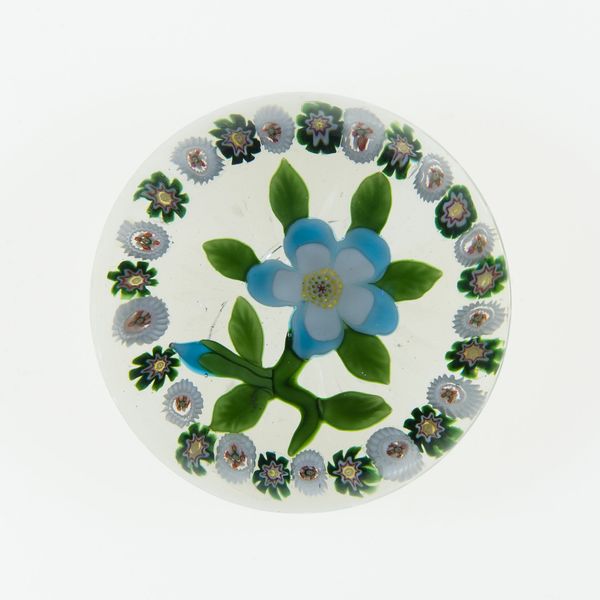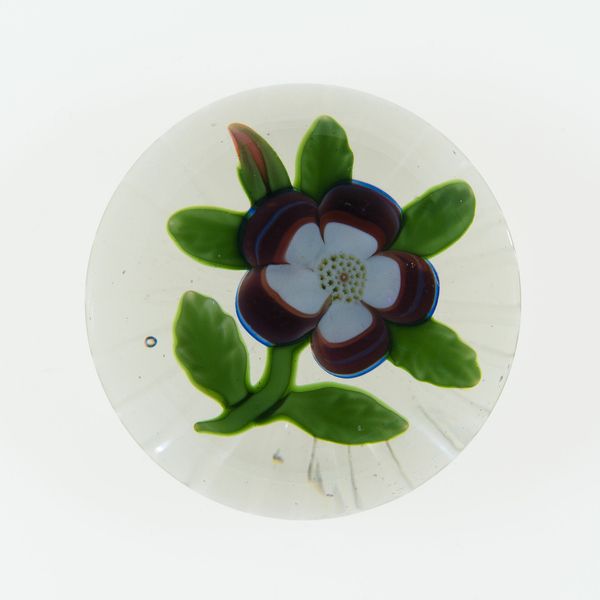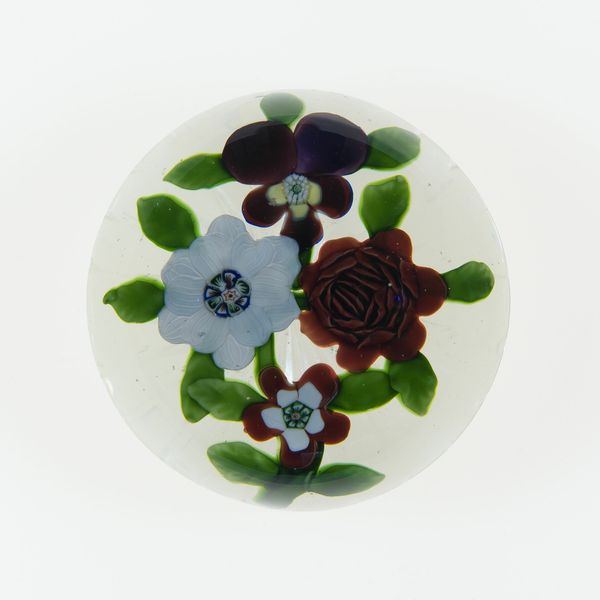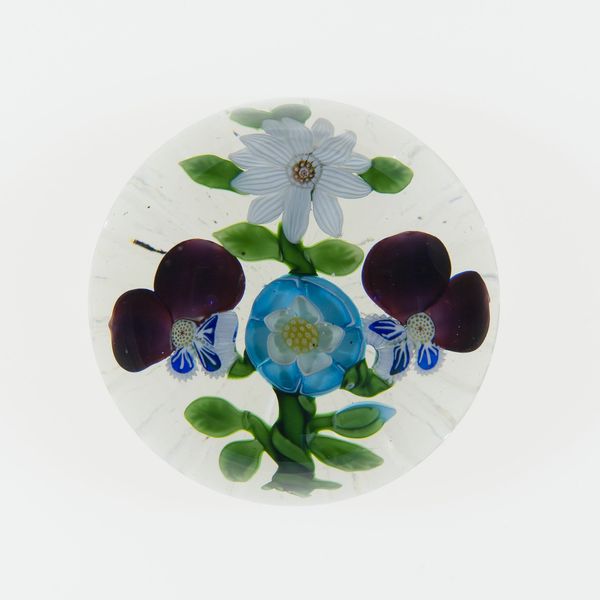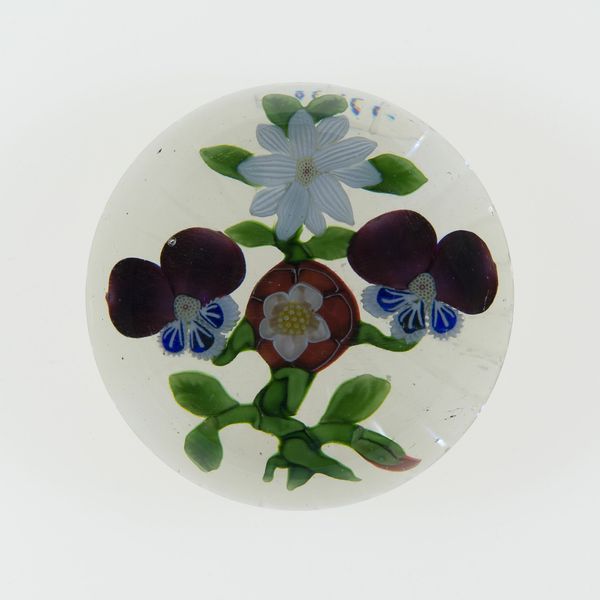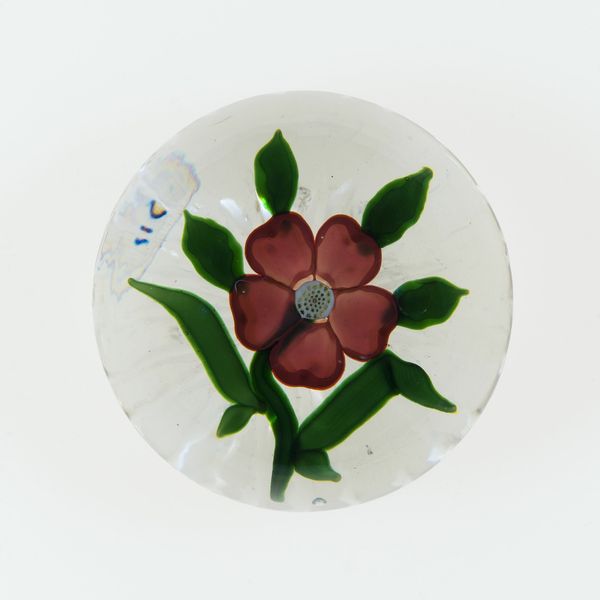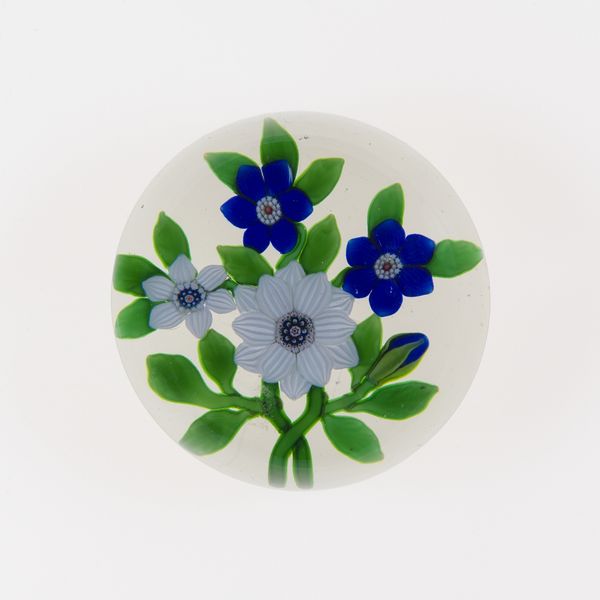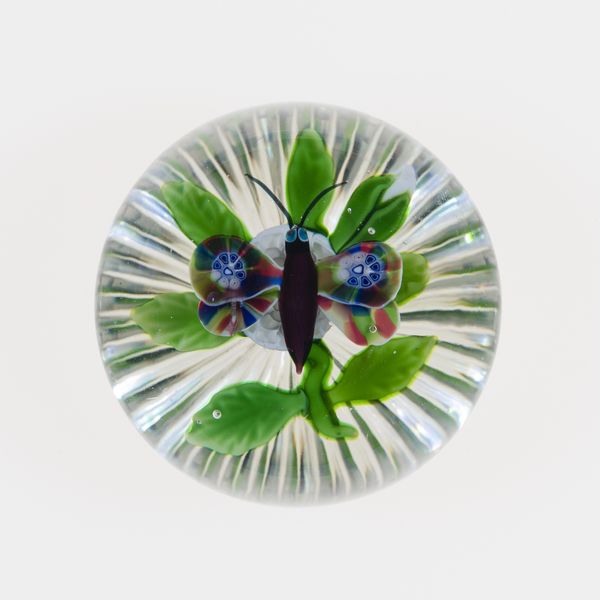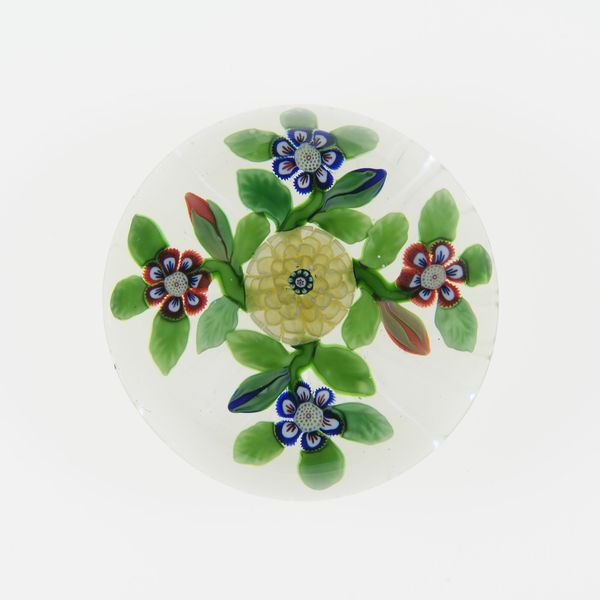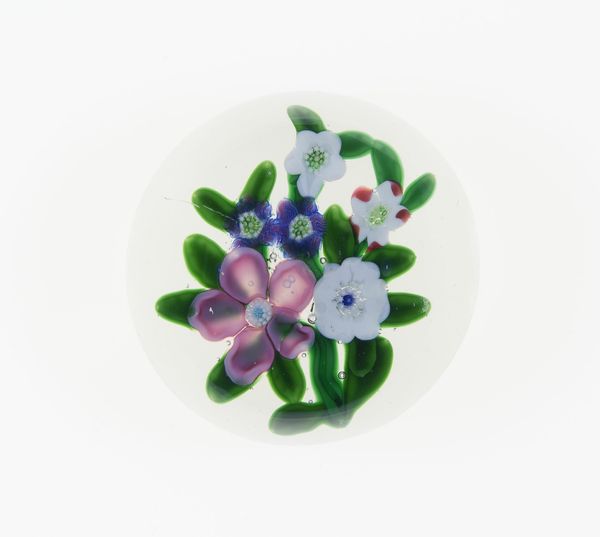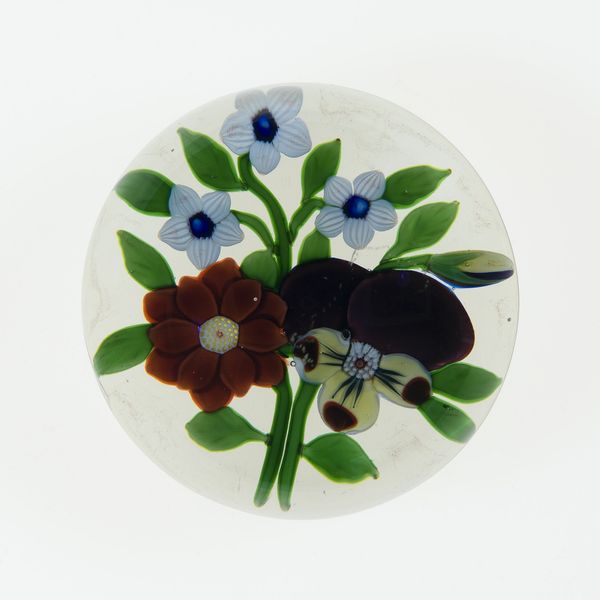
glass
#
glass
Dimensions: Diam. 7.6 cm (3 in.)
Copyright: Public Domain
Editor: Here we have "Paperweight", crafted between 1845 and 1860 by Baccarat Glassworks, currently residing at the Art Institute of Chicago. The artistry! It’s beautiful how the colors and forms are suspended in glass. What stands out to you about the composition of this paperweight? Curator: What captivates is the object's internal organization. The interplay between the insect and botanical forms exists entirely within the sphere. Consider how the glass acts as both a canvas and a lens. Do you see how the refractive properties distort and augment the encased elements? Editor: I do! It's like a miniature world. The flower is relatively simple in design, yet the butterfly seems so intricate, almost life-like in contrast. Curator: Indeed. Now, examine the chromatic arrangement. How do the cool tones of the petals harmonize with the warmer hues on the butterfly’s wings? The arrangement of the chromatic register contributes significantly to its aesthetic equilibrium. Note also the craftsmanship of the glass itself: do you detect any imperfections? Editor: Just a few tiny bubbles, almost like minute stars. The controlled precision used for trapping and shaping the various sections fascinates me. It's more than an objet d'art; it is a feat of skill. Curator: Precisely. We appreciate how the work merges artistry and mastery in technique, producing a captivating formal object, while still retaining a useful element, namely holding the paper down. It allows us to enjoy both structure and function. Editor: It really shifts your focus to appreciate just how intricate and beautiful functional objects can be. Curator: It offers a chance to examine visual order, technique, color theory, and the tactile potential of everyday objects, no matter how humble.
Comments
No comments
Be the first to comment and join the conversation on the ultimate creative platform.
